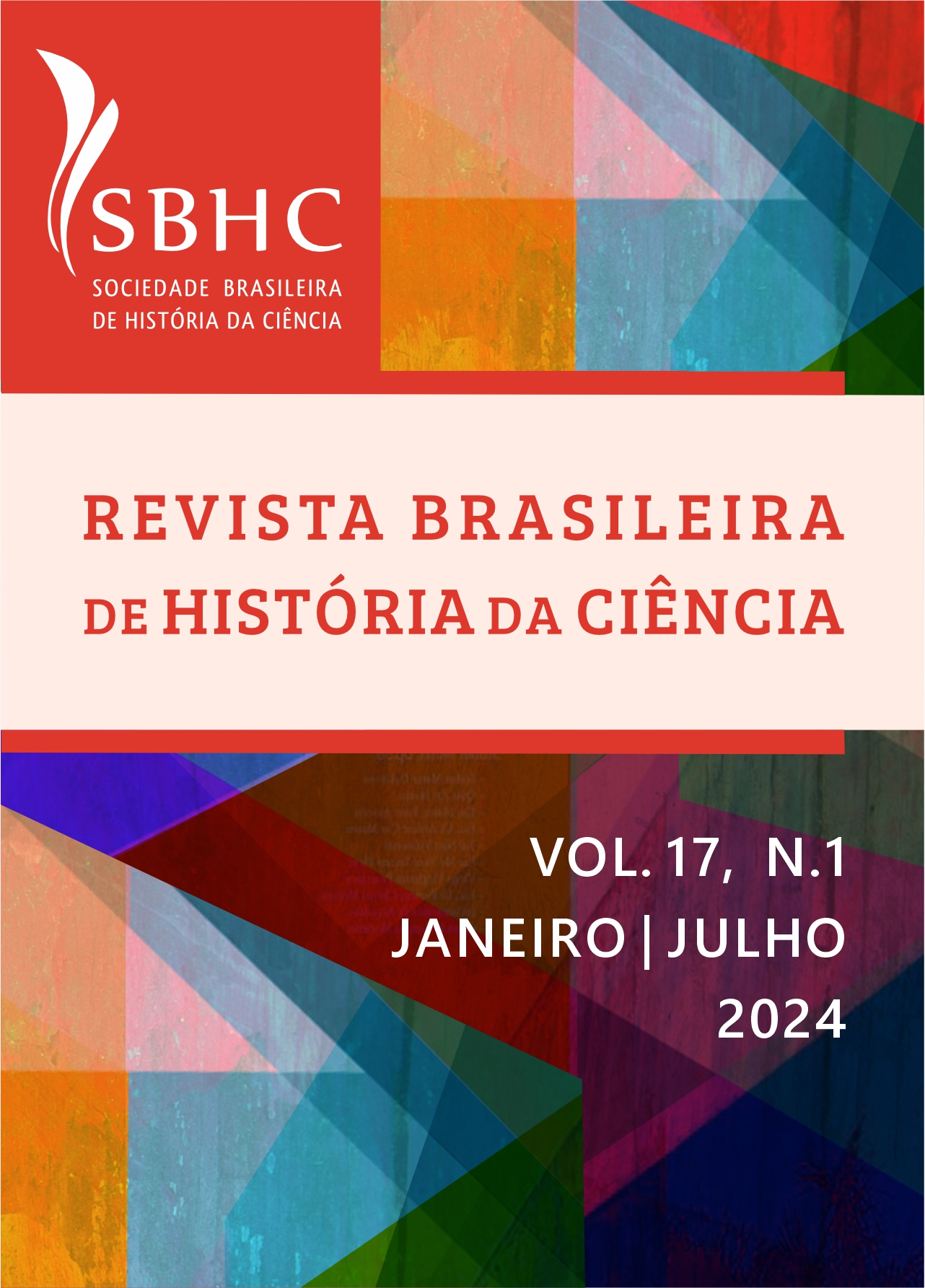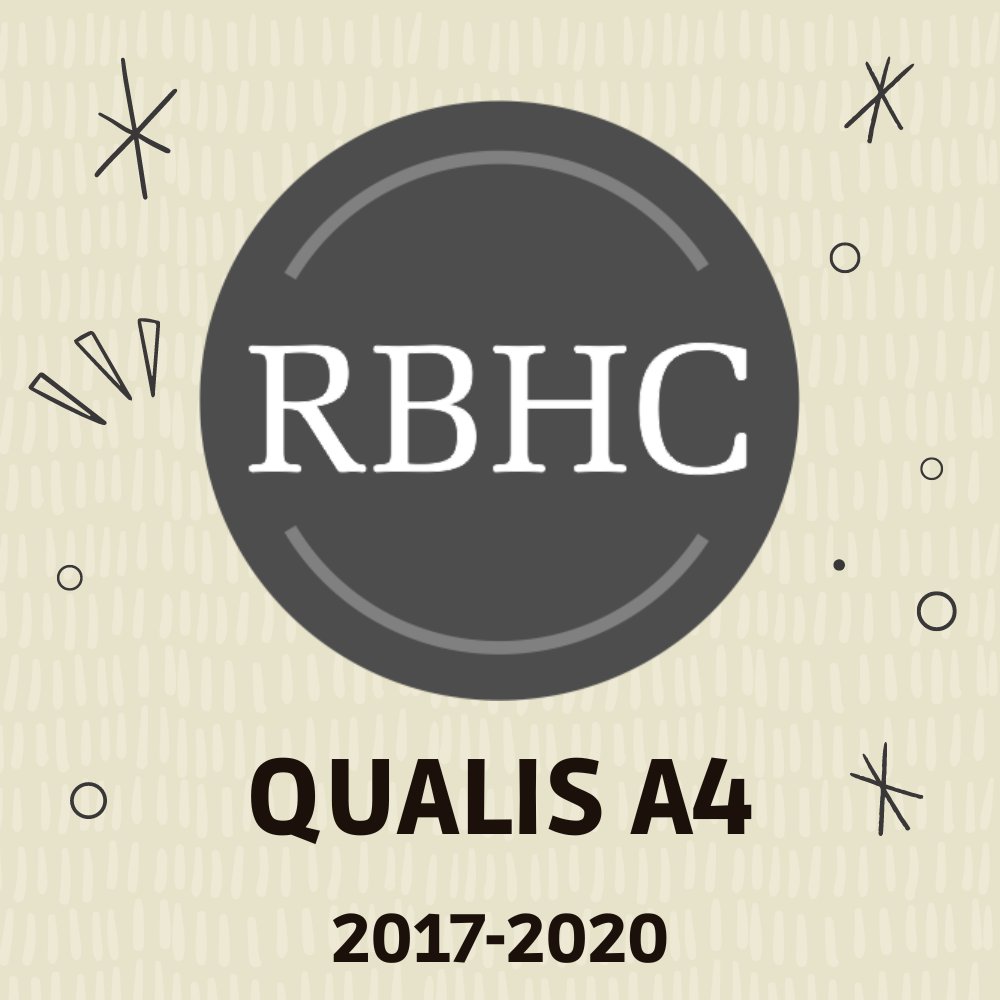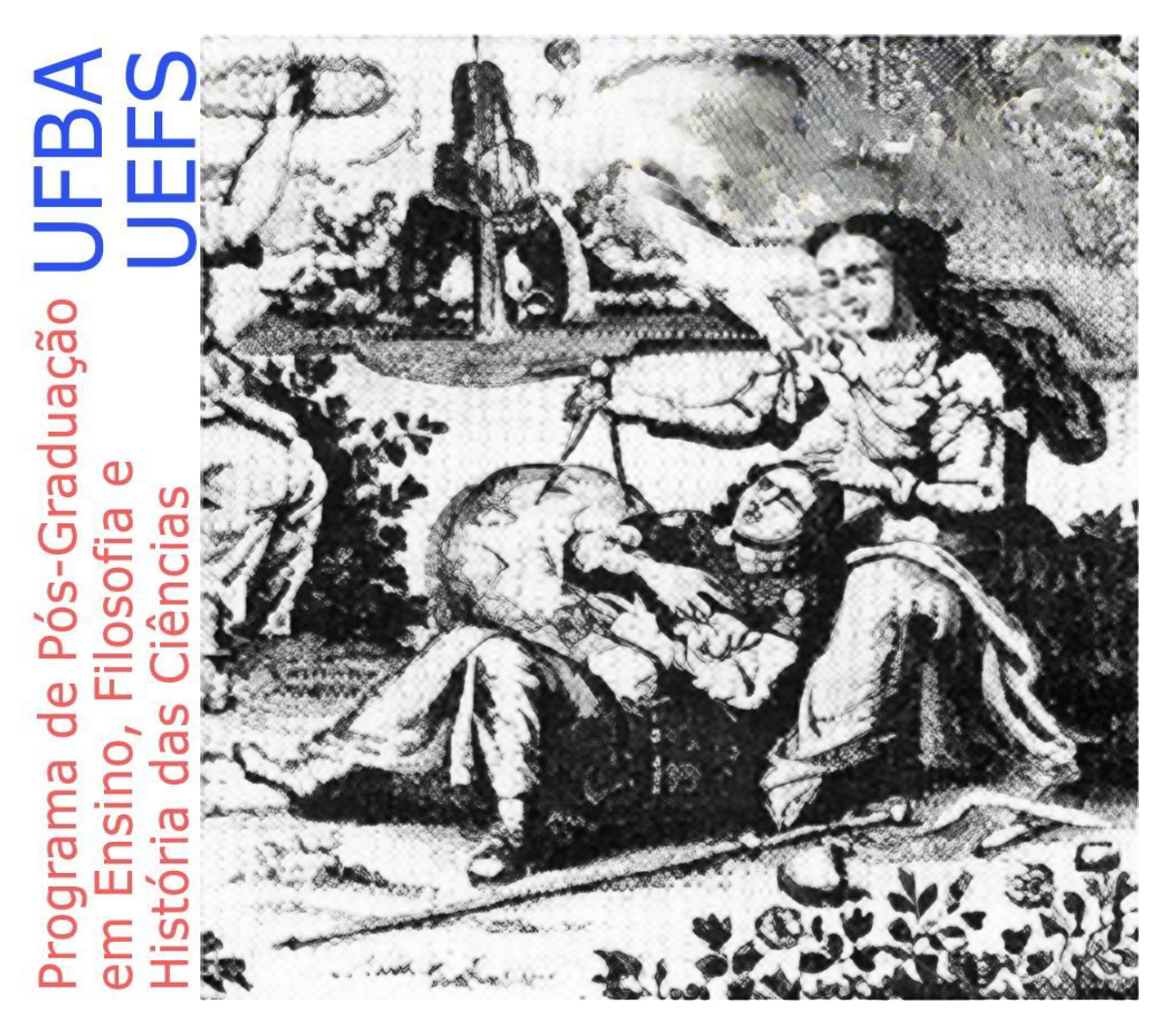A água no sistema de saneamento convencional
o processo histórico de consolidação de uma solução atualmente inadequada
DOI:
https://doi.org/10.53727/rbhc.v17i1.966Palavras-chave:
água , sistemas de saneamento , higiene , história da tecnologia , história da ciênciaResumo
Este artigo concentra-se na análise crítica do sistema de saneamento convencional atual, examinando seu processo histórico de consolidação e o papel da água no processo. Examina-se especificamente como as funções atribuídas à água como agente higiênico e meios físicos de transporte dos rejeitos moldaram as características do sistema até a atualidade. Com base nas características do contexto sociotécnico em que esse sistema se estabeleceu, argumenta-se que ele se mostra inadequado no cenário contemporâneo. Essa inadequação torna o sistema insustentável, especialmente em termos de uso de recursos, sobretudo de água.
Downloads
Referências
ARMAN, N.Z.; SALMIATI, S.; ARIS, A.; SALIM, M.R.; NAZIFA, T.H.; MUHAMAD, M.S.; MARPONGAHTUM, M. A review on emerging pollutants in the water environment: existences, health effects and treatment processes. Water, v. 13, n. 22, p. 1-31, 2021. DOI: https://doi.org/10.3390/w13223258
ATKINS, P. Animal wastes and nuisances in nineteenth century London. In: ATKINS, P. (ed.). Animal Cities: beastly urban histories, 2012. p. 19-52.
BLACK, M. The experience of the first sanitary revolution: are there lessons for today’s global sanitation crisis? Waterlines, v. 27, n. 1, p. 62-70, 2008. DOI: https://doi.org/10.3362/1756-3488.2008.006
BLACK, M.; FAWCETT, B. The last taboo: opening the door on the global sanitation crisis. London: Earthscan, 2008.
BRUCE, F.E. Water supply and waste disposal. In: SINGLER, C. et al. (ed.). A history of technology. Oxford: Clarendon Press, 1968. v. 4.
BURTON, J.; PATEL, D.; LANDRY, G.; ANDERSON, S.M.; RARY, E. Failure of the gold standard: the role of a mixed methods research toolkit and human-centered design in transformative WASH. Environ Health Insights, v. 15, p. 1-4, 2021. DOI: https://doi.org/10.1177/11786302211018391
CALLON, M. Society in the making: the study of technology as a tool for sociological analysis. In: BIJKER, W. et al. (org.). Social construction of technological systems. Cambridge: Cambridge University Press, 1987.
CARDINI, M. L’igiene pubblica di Roma antica: fino all’età imperiale. Avezzano: Studio Bibliografico A. Polla, 1909.
COSGROVE, J.J. History of sanitation. Pittsburgh: Standard Sanitary Manufacturing Company, 1909.
DAVISON, K. The sit-down flush toilet revisited. Thesis (Master’s thesis in Industrial Design) – University of Calgary, Calgary, 2001.
DE DECKER, K. Recycling animal and human dung is the key to sustainable farming. Low-Tech Magazine, 15 set. 2010. Disponível em: https://www.lowtechmagazine.com/2010/09/recycling-animal-and-human-dung-is-the-key-to-sustainable-farming.html. Acesso em: 11 jul. 2020.
DE GISI, S.; PETTA, L.; WENDLAND, C. History and technology of “terra preta” sanitation. Sustainability, v. 6, n. 3, p. 1328-1345, 2014. DOI: https://doi.org/10.3390/su6031328
DEBLONDE, T.; COSSU-LEGUILLE, C.; HARTERMANN, P. Emerging pollutants in wastewater: a review of the literature. International Journal of Hygiene and Environmental Health, v. 214, n. 6, p. 442-448, 2011. DOI: https://doi.org/10.1016/j.ijheh.2011.08.002
DEVKOTA, G. P.; PANDEY, M. K.; MAHARJAN, S. K. Urine diversion dry toilet: a narrative review on gaps and problems and its transformation. European Journal of Behavioral Sciences, v. 2, n. 3, p. 10-19, 2020. DOI: https://doi.org/10.33422/ejbs.v2i3.151
DIAS, R.; NOVAES, H. Construção do marco analítico-conceitual da tecnologia social. In: DAGNINO, R. (org.). Tecnologia social: ferramenta para construir outra sociedade. 2. ed. Campinas: Komedi, 2010.
DINGLE, T. The life and times of the Chadwickian solution. In: TROY, P. Troubled waters: confronting the water crisis in Australia’s cities. Canberra: ANU Press, 2008. DOI: https://doi.org/10.22459/TW.06.2008.01
FEO, G.D.; LAUREANO, P.; DRUSIANI, R.; ANGELAKIS, A.N. Water and wastewater management technologies through the centuries. Water Science & Technology: Water Supply, v. 10, n. 3, p. 337-349, 2010. DOI: https://doi.org/10.2166/ws.2010.102
FORTY, A. Objects of desire, design and society (1750-1980). London: Thames and Hudson, 1986.
FREIGHTENED: the real cost of shipping. Produção de Denis Delestac. Barcelona: Polar Star Films/La Compagnie des Taxis-Broussie, 2016. 90 min.
GANIRON, T. Measuring levels of end-users’ acceptance and use of UDDT. International Journal of u- and e-Service, Science and Technology, v. 8, n. 3, p. 77-88, 2015. DOI: https://doi.org/10.14257/ijunesst.2015.8.3.07
GASTELAARS, M. The water closet: public and private meanings. Science as Culture, v. 5, n. 4, p. 483-505, 1996. DOI: https://doi.org/10.1080/09505439609526444
GEELS, F. Co-evolution of technology and society: the transition in water supply and personal hygiene in the Netherlands (1850-1930) a case study in multi-level perspective. Technology in Society, v. 27, n. 3, p. 363-397, 2005. DOI: https://doi.org/10.1016/j.techsoc.2005.04.008
HARPIN, D. Thames water crisis will not derail opening of London’s new super sewer. News. My London, London, 30 jun. 2023. Disponível em: https://www.mylondon.news/news/thames-water-crisis-will-not-27228192. Acesso em: 8 jul. 2024.
HORN, L.J. The porcelain god: a social history of the toilet. New Jersey: Carol Press, 1996.
HOY, S.M. Chasing dirt: the American pursuit of cleanliness. New York: Oxford University Press, 1995.
HUGHES, T.P. The seamless web: technology, science, etcetera, etcetera. Social Studies of Science, v. 16, n. 2, p. 281-292, 1986. DOI: https://doi.org/10.1177/0306312786016002004
IBÁÑEZ, M. R. El monstruo de las toallitas: relacionalidad material en el Antropoceno. Politica y Sociedad, v. 57, n. 2, p. 375-393, 2020. DOI: https://doi.org/10.5209/poso.66449
ILLICH, I. H2O and the waters of forgetfulness. New York: Marion Boyars, 1986.
JANSEN, C. M. G. Systems for the disposal of waste and excreta in Roman cities: the situation in Pompeii, Herculaneum and Ostia. In: RAVENTÓS, X.D.; REMOLÁ, J.A. Sordes urbis: la eliminación de residuos en la ciudad romana: actas de la reunión de Roma (15-16 nov. 1996). Roma: L’Erma di Bretschneider, 2000. p. 37-50.
KIRA, A. The bathroom. New York: Viking Press, 1976.
KÖRNER, W.; SPENGLER, P.; BOLZ U.; SCHULLER, W.; HANF, V.; METZGER, J. Substances with estrogenic activity in effluents of sewage treatment plants in southwestern Germany: 2: biological analysis. Environmental Toxicology and Chemistry, v. 20, n. 10, p. 2142-2151, 2001. DOI: https://doi.org/10.1002/etc.5620201002
KRANTZ, H. Water systems meeting everyday life: a conceptual model of household use of urban water and sanitation systems. Public Works Management & Policy, v. 17, n. 1, p. 103-119, 2012. DOI: https://doi.org/10.1177/1087724X11415285
LAMICHHANE, K.M.; BABCOCK, R.W. Survey of attitudes and perceptions of urine-diverting toilets and human waste recycling in Hawaii. The Science of the Total Environment, v. 443, p. 749-756, 2013. DOI: https://doi.org/10.1016/j.scitotenv.2012.11.039
LANGERERABER, G.; MUELLEGER, E. Ecological sanitation: a way to solve global sanitation problems? Environment International, v. 31, n. 3, p. 433-444, 2005. DOI: https://doi.org/10.1016/j.envint.2004.08.006
LATOUR, B. The pasteurization of France. Cambridge: Harvard University Press, 1988.
LATOUR, B. Where are the missing masses? The sociology of a few mundane artifacts. In: BIJKER, W.; LAW, J. (org.). Shaping technology/building society. Cambridge: MIT Press, 1992.
LOFRANO, G.; BROWN, J. Wastewater management through the ages: a history of mankind. The Science of the Total Environment, v. 408, n. 22, p. 5254-5264, 2010. DOI: https://doi.org/10.1016/j.scitotenv.2010.07.062
LUPTON, E; MILLER, A. The bathroom, the kitchen, and the aesthetics of waste: a process of elimination. Princeton: Architectural Press; List Visual Arts Center, 1992.
MCDONOUGH, W; BRAUNGART, M. Cradle to cradle: remaking the way we make things. New York: North Point Press, 2002.
MELOSI, M.V. The place of the city in environmental history. Environmental History Review, v. 17, n. 1, p. 1-23, 1993. DOI: https://doi.org/10.2307/3984888
MELOSI, M.V. The sanitary city: urban Infrastructure in America from colonial times to the present. Baltimore: Johns Hopkins University Press, 2000.
PANCIERA, S. Nettezza urbana a Roma: organizzazione e responsabili. In: RAVENTÓS, X.D.; REMOLÁ, J.A. Sordes urbis: la eliminación de residuos en la ciudad romana: actas de la reunión de Roma (15-16 nov. 1996). Roma: L’Erma di Bretschneider, 2000. p. 95-107.
PATERSON, C.; MARA, D.; CURTIS, T. Pro-poor sanitation technologies. Geoforum, v. 38, n. 5, p. 901-907, 2007. DOI: https://doi.org/10.1016/j.geoforum.2006.08.006
PENNER, B. The Prince’s water closet: sewer gas and the city. The Journal of Architecture, v. 19, n. 2, p. 249-271, 2014. DOI: https://doi.org/10.1080/13602365.2014.908589
PINCH, T.; BIJKER, W.E. The social construction of facts and artifacts: or how the sociology of science and the sociology of technology might benefit each other. In: BIJKER, W. et al. (eds.). The social construction of technological systems. Cambridge: MIT Press, 1990.
QUITZAU, M.B. Changing ideas of bodily cleanliness. In: INTERNATIONAL SUMMER ACADEMY ON TECHNOLOGY STUDIES, 6., 2004, Deutschlandsberg. Proceedings…, Deutschlandsberg: [s.n.], 2004.
QUITZAU, M.B. Water-flushing toilets: systemic development and path-dependent characteristics and their bearing on technological alternatives. Technology in Society, v. 29, n. 3, p. 351-360, 2007. DOI: https://doi.org/10.1016/j.techsoc.2007.04.005
ROCCARO, P.; SANTAMARIA, A.E.; VAGLIASINDI, F.G.A. Historical development of sanitation from the 19th century to nowadays: centralized vs decentralized wastewater management systems. In: ANGELAKIS, A.N.; ROSE J.B. (org.). Evolution of sanitation and wastewater technologies through the centuries. London: IWA Publishing, 2014.
RODRIGUEZ, U.; HUTTON, G.; JAMORA, N.; HARDER, D.; OCKELFORD, J.; GALING, E. Economic assessment of sanitation interventions in the Philippines: a six-country study conducted in Cambodia, China, Indonesia, Lao PDR, the Philippinies and Vietnam under the Economicx of Sanitation Initiantive (ESI). Jakarta: World Bank/Water and Sanitation Program, 2011.
ROSEN, C.M.; TARR, J.A. The importance of an urban perspective in environmental history. Journal of Urban History, v. 20, n. 3, p. 299-310, 1994. DOI: https://doi.org/10.1177/009614429402000301. DOI: https://doi.org/10.1177/009614429402000301
SHOVE, E. Comfort, cleanliness and convenience: the social organization of normality. Oxford: Berg, 2003.
SOARES, I.P.; SCHULTZ, E.L.; GAMBETTA, R.; GONCALVES, S. B. Biogás e suas contribuições para os objetivos de desenvolvimento sustentável. Brasília: Embrapa Agroenergia, 2022.
TARR, J.A. The search for the ultimate sink: urban pollution in historical perspective. Akron: The University of Akron Press, 1996.
TYNAN, N. Nineteenth century London water supply: processes of innovation and improvement. The Review of Austrian Economics, v. 26, n. 1, p. 73-91, 2013. DOI: https://doi.org/10.1007/s11138-012-0182-8
UDDIN, S.M.; MUHANDIKI, S.; SAKAI, A.; MAMUN, A.; HRIDI S. Socio-cultural acceptance of appropriate technology: identifying and prioritizing barriers for widespread use of the urine diversion toilets in rural Muslim communities of Bangladesh. Technology in Society, v. 38, p. 32-39, 2014. DOI: https://doi.org/10.1016/j.techsoc.2014.02.002
UEKÖTTER, F. The power of the water system: towards a global history of the water closet. UrbanScope, v. 9, p. 21-29, 2018.
VERSTRAETE, W.; VAN DE CAVEYE, P.; DIAMANTIS, V. Maximum use of resources present in domestic used water. Bioresource Technology, v. 100, n. 23, p. 5537-5545, 2009. DOI: https://doi.org/10.1016/j.biortech.2009.05.047
VUORINEN, S.H. Water, toilets and public health in the Roman era. Water Science and Technology: Water Supply. v. 10, n. 3, p. 411-415, 2010. DOI: https://doi.org/10.2166/ws.2010.111
WALTNER-TOEWS, D. The origin of feces: what excrement tells us about evolution, ecology, and a sustainable society. Toronto: ECW Press, 2013.
WERNER, C.; PANESAR, A.; RÜD, S.B.; OLT, C.U. Ecological sanitation: principles, technologies and project examples for sustainable wastewater and excreta management. Desalination, v. 248, n. 1-3, p. 392-401, 2009. DOI: https://doi.org/10.1016/j.desal.2008.05.080
WHO, World Health Organization; UNICEF, United Nations Children´s Fund. Global water supply and sanitation assessment 2000 Report. Geneva: WHO Library Cataloguing-in-Publication Data, 2000.
WRIGHT, L. Clean and decent: the fascinating history of the bathroom & the water closet and of sundry habits, fashions & accessories of the toilet principally in Great Britain, France, & America. London: Routledge & Kegan Paul, 1960.
ZELDOVICH, L. The other dark matter: the science and business of turning waste into wealth and health. Chicago: The University of Chicago Press, 2021. DOI: https://doi.org/10.7208/chicago/9780226814223.001.0001
Recebido em novembro de 2023
Aceito em março de 2024
Downloads
Publicado
Edição
Seção
Licença
Copyright (c) 2024 yago quiñones triana

Este trabalho está licenciado sob uma licença Creative Commons Attribution-NonCommercial-NoDerivatives 4.0 International License.



















